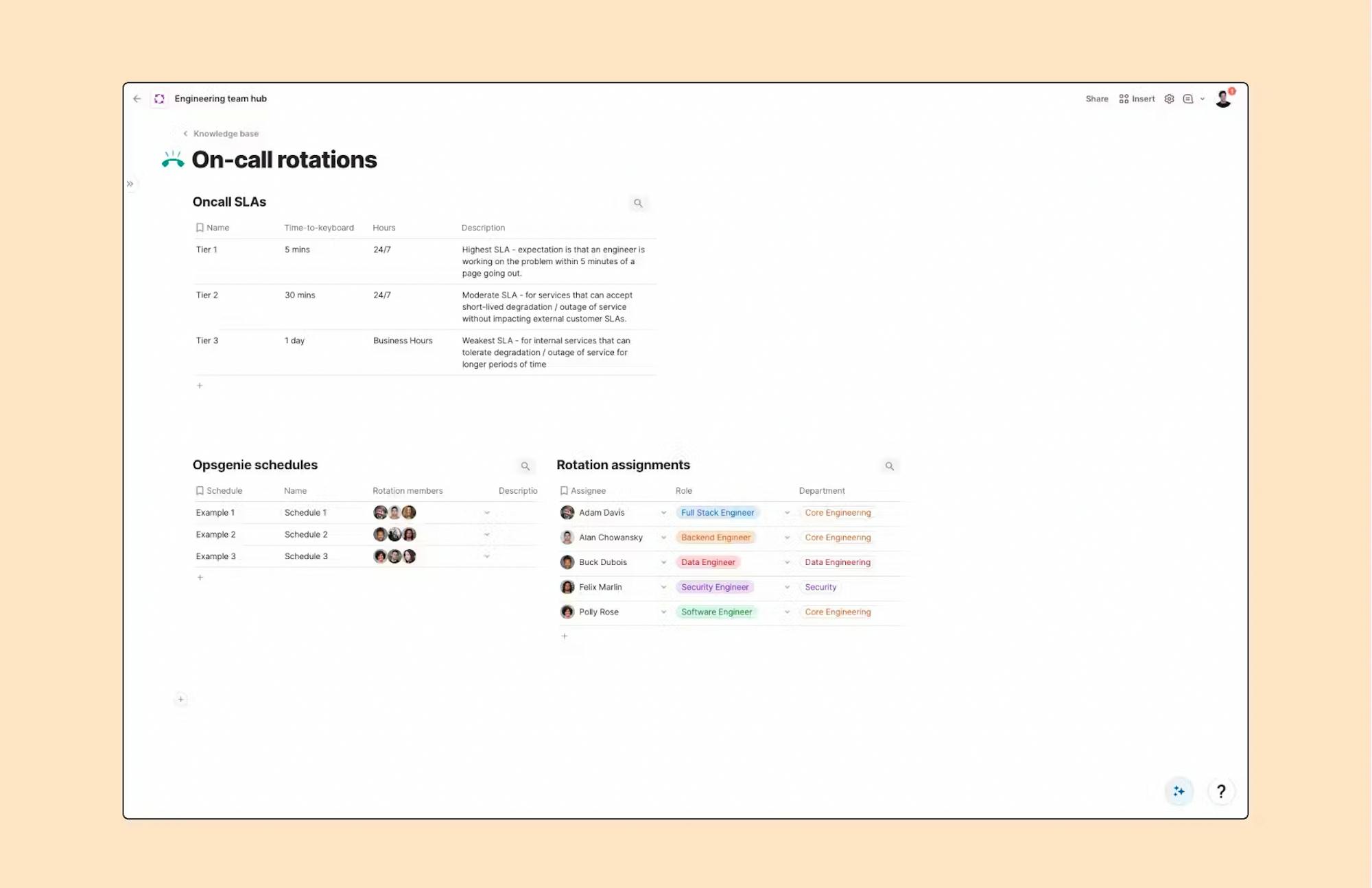Staffing OS part 3: Onboarding that works
How I use the staffing OS to provide a seamless onboarding experience for new engineers.


Oliver Heckmann
Head of Engineering at Coda
No one wants to spend their first day at an exciting new job feeling lost or unsure how to get started. Unfortunately, this is an all-too-common experience for many due to minimal or non-existent onboarding processes. While it can be difficult to dedicate time to setting up a great onboarding experience, it should be a priority. After all, you’ve spent so much time and effort figuring out your staffing plans and hiring the right people—it only makes sense to ensure they’re set up for success once they join. With Coda, you can make onboarding a seamless, unified experience that goes beyond just the first few weeks. This is the final post in my three-part series all about the staffing OS, my Coda template that gives you a single source of truth for all your staffing planning. The staffing OS brings three common workflows together—headcount management, hiring, and onboarding—for a holistic, flexible system you can use with your recruiting and HR teams.

How to onboard new hires.
First, you’ll need to allocate them to a team and manager. Sometimes this is already decided before the role is posted, but for roles like generalist software engineers or product managers, it can come later in the process or once a candidate has signed. My headcount management template makes it easy to assign and track team allocations, so you can get the full picture of who’s working on what at any one time. Next, you’ll want to ensure a smooth and supportive onboarding experience to set both you and your new hire up for success. A well-thought-out onboarding process not only makes for a welcoming and productive start but can also impact a team member’s long-term value to the company—and even how long they stay with you. Onboarding should cover the basics—how to set up IT systems, what tools to use, where the coffee is—but also give the new employee foundational knowledge about the company, like your strategy, mission, vision, and values. You’ll also need to introduce them to the team and how you work together, as well as setting expectations for their role and what they should get started on first. There’s a lot to cover, so you’ll want to make it easy for them to find and digest the information over time. I’ve found that onboarding is often left to each team to figure out themselves, rather than being standardized across the org. This can mean the experience heavily depends on which team and manager someone is joining. For the sake of a productive team—and so everyone is being treated equally and fairly—every new hire should be given the same context and access to the same level of support while they ramp up. Here are three ways I use the staffing OS to make onboarding new engineers a consistent, seamless process.1. Give them all the context they need, in one place.
I’m a big fan of team hubs and advise all engineering teams to use them. Your hub acts as a centralized source of truth for everything about the team, including how you work, your engineering processes, system architecture, and so on. This means your engineers can spend more time coding and less time tracking down information, copy-pasting between tools, or sending manual updates. I recommend all your onboarding material lives in the hub too, so relevant information is all together and a new hire can easily find more context when they need it.
2. Keep track of onboarding progress.
In the initial few weeks, you’ll need to provide your new hire with a list of things to get done. That might include certain docs to read, tools to set up, teammates to meet, and initial projects to work on. You can make them an easy-to-use checklist in Coda so they—and you—can keep track of their progress and stay aligned on how things are going. You can also have Coda automatically schedule check-in meetings at certain points using the Google Calendar pack.
3. Add new hires to rotations.
Once you’ve set up your dashboards for tracking progress, you can connect your pager rotations, build copy rotations, or assignment trackers so everyone can see who’s responsible for what. Most teams will add new hires to their rotations after they get to a certain milestone in their onboarding. You can easily connect your pager rotations to your staffing OS using Cross-doc syncing or the OpsGenie pack. And you can even set up an automated reminder for everyone to get trained for the rotation.
How AI can help improve your onboarding processes.
With the ability to summarize data, find answers, and give feedback, I’ve found Coda AI to be a valuable onboarding assistant. Because Coda AI knows your content, not just the internet, it can provide accurate, relevant answers to questions your new hire may have—almost like their own personal onboarding buddy. For example, I’ve seen our own new hires use Coda AI to:- Ask questions that come up as they’re reading through the onboarding guide, such as details on specific policies or projects.
- Prepare for meetings by getting context on each topic on the agenda.
- Quickly see if a doc is relevant to what they’re trying to find or learn by using Coda AI to summarize its content.
Coda makes onboarding a seamless, unified experience.
By unifying all your onboarding materials together in Coda, you can give your new team members a warm welcome and a smooth start. Rather than overwhelming them with a ton of different docs, emails, and links, you can instead give them one centralized place to find everything they need to get settled in. Coda makes this possible by bringing teams, data, and tools together in one doc. Its flexibility means you can create, maintain, and iterate on your onboarding process without worrying about out-of-sync copies or managing information across multiple different tools. And the added AI and automations mean you can reduce some of the busywork and enhance the experience with quick answers when needed. For a detailed guide on centralizing your onboarding information, along with templates to get started quickly, try out my staffing OS here. Your new hires will thank you!Related posts
Explore more stories about planning and OKRs.












